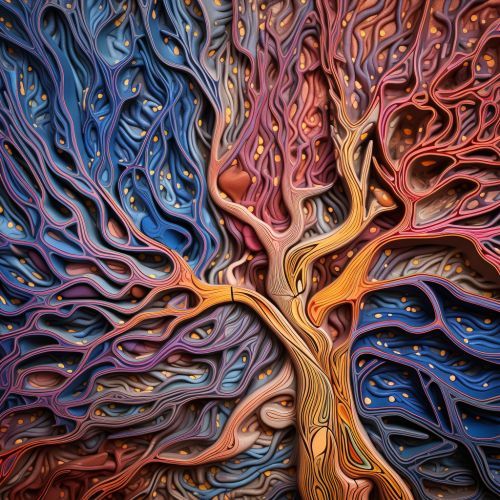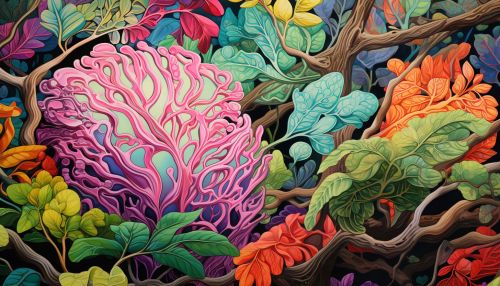Cerebral Cortex
Anatomy and Structure
The cerebral cortex is the outermost layer of the brain, visible to the naked eye and divided into two hemispheres. This gray matter is approximately 2-4mm thick and covers the underlying white matter of the brain. The cerebral cortex is folded, creating ridges, or gyri, and grooves, or sulci, which increase its surface area and the amount of information it can process.


The cerebral cortex is composed of up to six horizontal layers, each with a different composition in terms of neurons and connectivity. These layers are not uniformly defined across the cortex, with some areas, such as the primary motor cortex, having a distinct two-layered appearance due to a lack of certain intermediate layers.
Function
The cerebral cortex plays a key role in memory, attention, perception, awareness, thought, language, and consciousness. It is divided into sensory, motor, and association areas. Sensory areas receive and process information from the senses, motor areas control voluntary movements, and association areas are involved in complex cognitive processes.
Sensory Areas
Sensory areas of the cerebral cortex include the primary visual cortex, the primary auditory cortex, the primary somatosensory cortex, and the primary olfactory cortex. These areas receive direct input from the sensory organs and are involved in the perception of sensory information.
Motor Areas
The motor areas of the cerebral cortex include the primary motor cortex, which is responsible for generating neural impulses that control the execution of movement. The premotor cortex and the supplementary motor area are involved in the planning of movements.
Association Areas
The association areas of the cerebral cortex integrate information from different sensory and motor areas and are involved in higher cognitive functions such as learning, decision making, and complex motor activities like speaking and writing.
Development and Evolution
The cerebral cortex develops from the dorsal telencephalon and is the last part of the brain to mature. In humans, the cerebral cortex begins to form in the third month of prenatal development and continues to develop and change throughout childhood and adolescence.
The cerebral cortex has undergone significant evolutionary changes. In particular, the size and complexity of the cerebral cortex have increased dramatically in primates compared to other mammals.
Pathology
Various diseases and conditions can affect the cerebral cortex, including Alzheimer's disease, Parkinson's disease, and epilepsy. These conditions can lead to a range of symptoms, from motor and sensory deficits to cognitive and behavioral changes.
